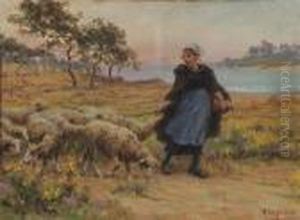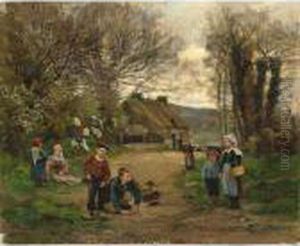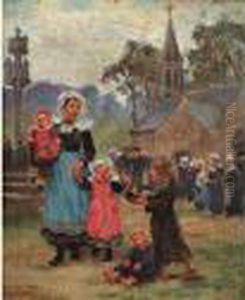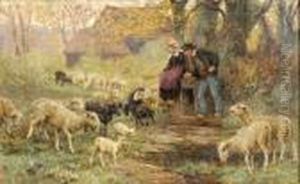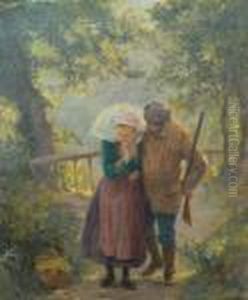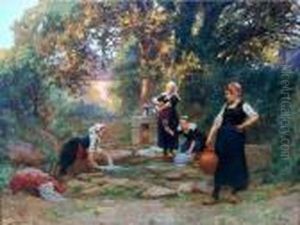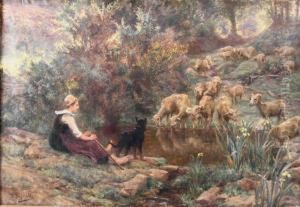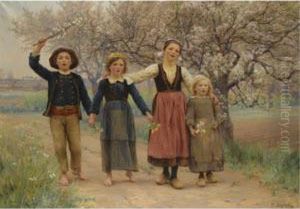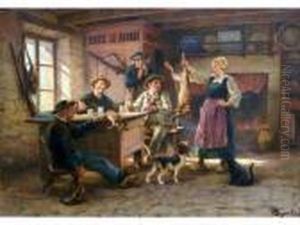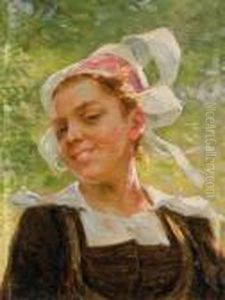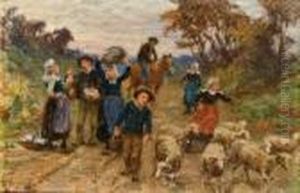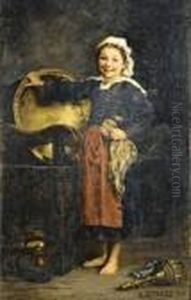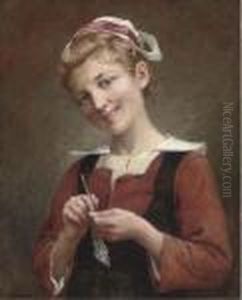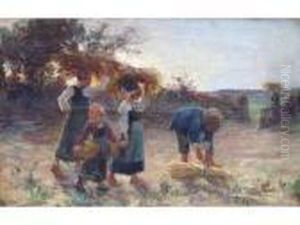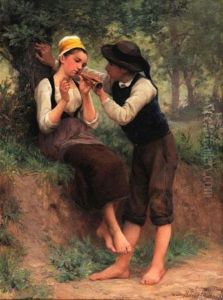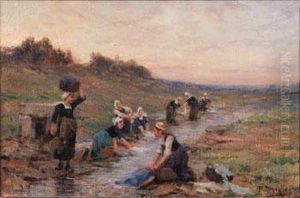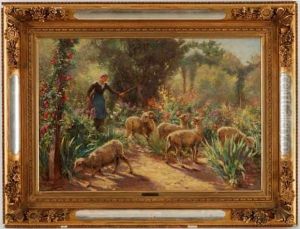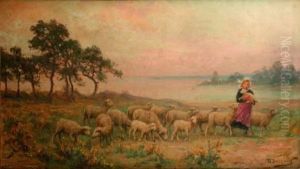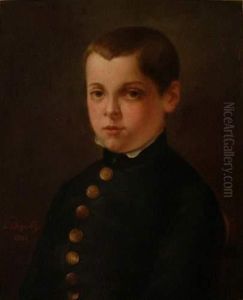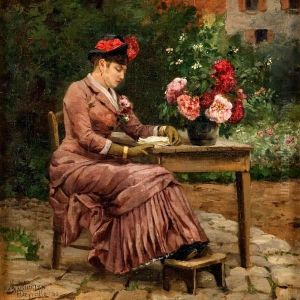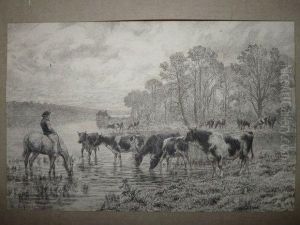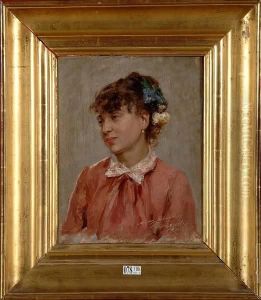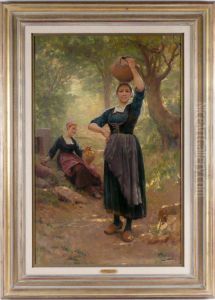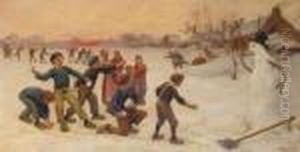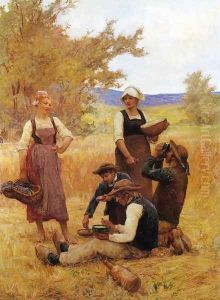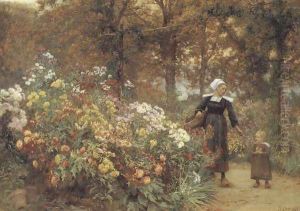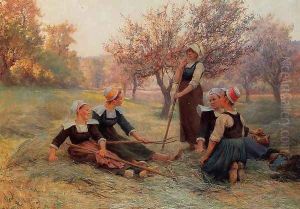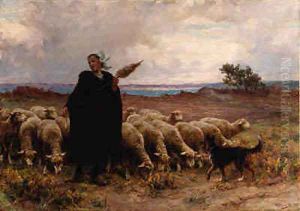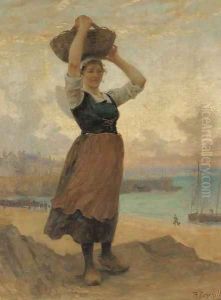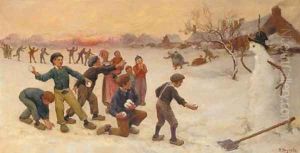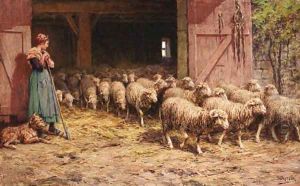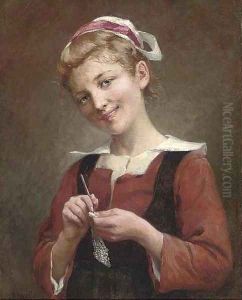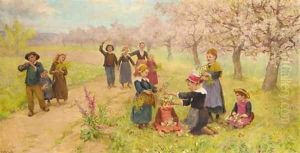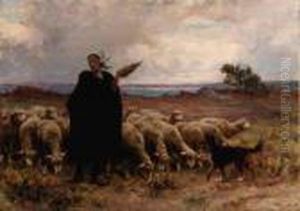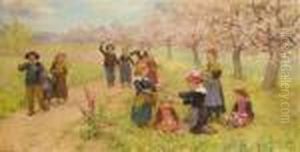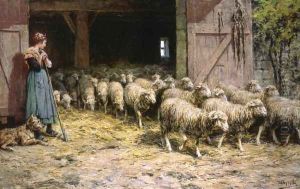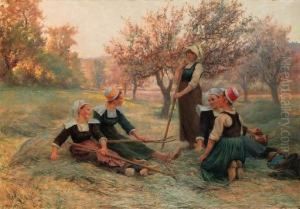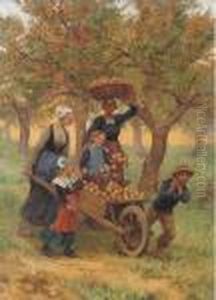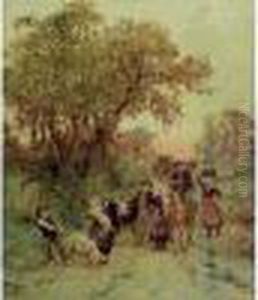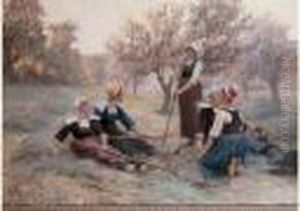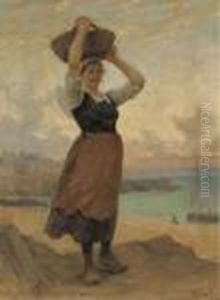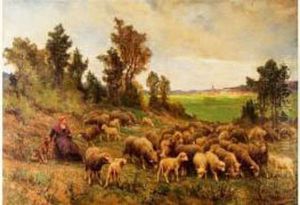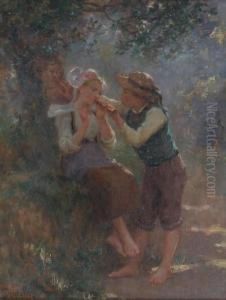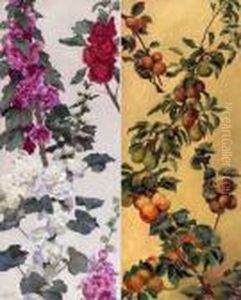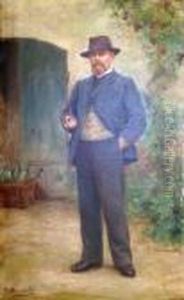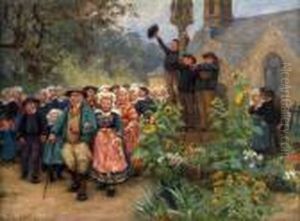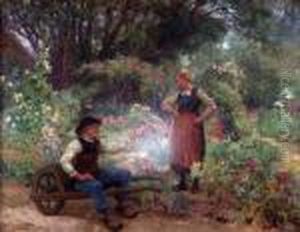Theophile Louis Deyrolle Paintings
Théophile Louis Deyrolle was a French painter primarily known for his detailed and realistic depictions of natural history subjects, including botanical illustrations and animal studies. Born on November 19, 1844, in Paris, Deyrolle came from a family with a strong interest in the natural sciences. This background profoundly influenced his artistic career. His father, Émile Deyrolle, ran the famous Deyrolle shop in Paris, which specialized in taxidermy and natural history objects, providing Théophile with an early and intimate exposure to a wide variety of flora and fauna.
Deyrolle showed an aptitude for drawing and painting from a young age. He studied under the French painter Jean-Léon Gérôme, a prominent figure in the academic art world of the time. Gérôme's influence is evident in Deyrolle's meticulous attention to detail and his commitment to the realistic portrayal of his subjects. Although not as widely recognized as his contemporaries in the realm of fine arts, Deyrolle carved out a niche for himself with his scientific illustrations, which were highly valued for their accuracy and educational value.
Throughout his career, Deyrolle contributed to various scientific publications and produced a large number of illustrations for educational purposes. His works were particularly popular in schools and were used to teach natural history to students. He had a talent for making complex scientific concepts accessible and engaging through his art, which made his work an important tool for education.
Beyond his illustrations, Deyrolle also painted still lifes and landscapes, showing a versatility that extended beyond his scientific work. Nevertheless, it is for his contributions to the field of natural history illustration that he is best remembered. Deyrolle's legacy continued through the family business, which remained a prominent Parisian institution for the study and appreciation of natural history.
After a lifetime dedicated to art and science, Théophile Louis Deyrolle passed away on February 14, 1923. His work remains a testament to the intersection of art and the natural world, reflecting a deep understanding and appreciation of the subjects he so carefully depicted.
